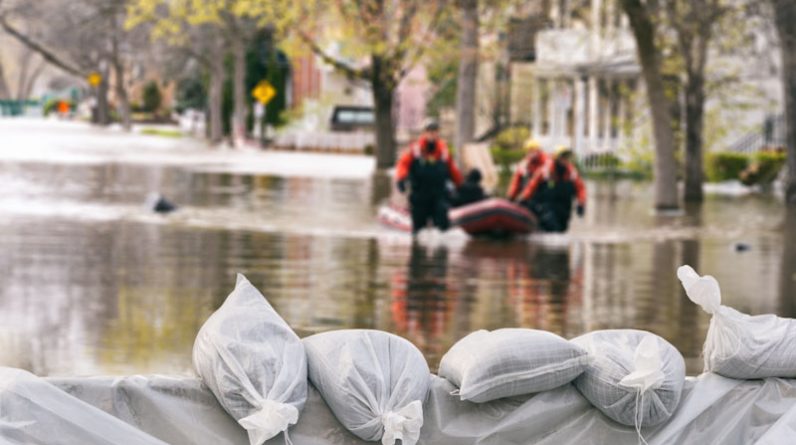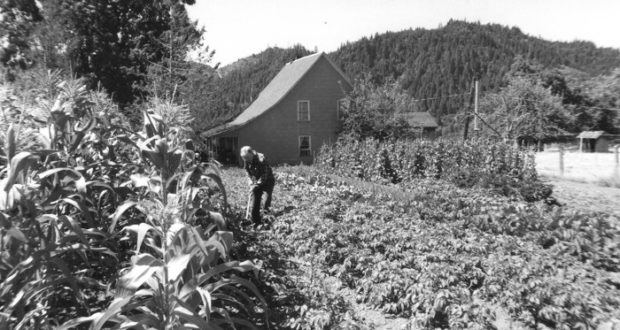Without a doubt, significant advancements in fire detection and suppression technologies have been made in the last decades, which have contributed to a steady decline in the number of residential fires in the United States. However, despite this progress, the National Fire Protection Agency (NFPA) reports that every year, hundreds of thousands of house fires are still reported, resulting in numerous fire-related fatalities and injuries.
Protecting our families and homes from fires is an often overlooked yet critical necessity. While the most common methods of home fire protection involve the purchase and use of smoke alarms and fire extinguishers, these are just basic steps that cover fires originating from within your home.
But what should one do if the threat comes from outside the home?
In 2022, the United States faced a challenging year marked by devastating wildfires. This wildfire season was particularly noteworthy and tragic. According to the National Oceanic and Atmospheric Administration (NOAA), a staggering 10 million acres were consumed by 66,131 separate wildfires. California alone endured 9,000 wildfires, which ravaged 1.2 million acres of land and, according to the latest statistics, destroyed over 10,000 structures.
While the West Coast bore the brunt of these wildfires, those living in or near wooded areas were not the only ones at risk. Even residents in residential areas were not immune.
Those that witnessed a wildfire have said that fire was literally falling from the sky or advancing like a tidal wave, oftentimes surpassing the height of rooftops. In most cases, a wildfire is a battle you cannot win. Fire poses a formidable challenge under typical residential conditions, but when confronted with the sheer scale of a wildfire, defending your home may seem like a hopeless endeavor. Nevertheless, there are situations where measures can be taken to mitigate the threat of a wildfire encroaching upon your home.
Fire safety and prevention should start from the planning and construction stages
Nowadays, there are all sorts of building materials available that have fire-resistant and deterrent properties. If you plan on building a house in a wooded area, it would be smart to use only such materials to make sure your home has a chance of surviving a devastating wildfire. Even if you just moved into an already-built home, you should do a little bit of research and check out what materials you should be using for renovation, repair, or maintenance projects. Here are just a few examples you should consider:
Roofing: Choose materials with a Class A fire rating, such as metal roofing, concrete or clay tiles, or asphalt shingles specifically designed to be fire-resistant. These materials are less likely to ignite from ember showers or direct flame exposure.
Siding: Consider non-combustible siding options like brick, stone, stucco, or fiber cement siding. These materials are less susceptible to catching fire and can act as a barrier against radiant heat and ember intrusion.
Windows: Install dual-pane or tempered glass windows that are less likely to break from heat or impact. This can help prevent the entry of embers into your home, reducing the risk of internal fires.
Doors: Choose solid wood or metal doors that provide better resistance to fire and heat compared to hollow-core doors.
Using fire-resistant building materials not only increases the fire resistance of your home but also improves its overall durability and longevity.
Install Ember-Resistant Vents
Embers from wildfires can travel long distances and easily enter homes through vents and openings. Ember intrusion is one of the primary causes of home ignitions during wildfires. Installing ember-resistant vents can help prevent ember entry and reduce the risk of interior fires.
Ember-resistant vents typically feature fine mesh screens that block embers while still allowing for proper ventilation. These vents can be installed in soffits, attic vents, and other openings vulnerable to ember intrusion. They help to create a barrier against embers, protecting the interior of your home and reducing the likelihood of ignition.
It’s important to ensure that the vents are properly installed, well-maintained, and free from blockages to ensure their effectiveness. Regularly inspect and clean the vents to remove any debris or accumulated flammable materials that could compromise their functionality.
By incorporating fire-resistant building materials and ember-resistant vents into your home’s design or retrofitting them into existing structures, you can significantly enhance your home’s ability to withstand wildfires and reduce the risk of fire damage or destruction.
Create a safe and defensible space
One of the most effective and affordable methods to safeguard our homes from wildfires is by creating an area that can be protected. In simple terms, such an area refers to the zone surrounding your home, separating it from vegetation and other flammable materials.
Vegetation serves as fuel for wildfires, and by creating a space between your home and this fuel, you establish a natural firebreak that hopefully hinders the fire’s progression. The objective is to maximize the space around your home as practically feasible.
In certain states, defensible space guidelines recommend creating zones at 30- and 100-foot radius around your home. Most experts suggest that a minimum of 30 feet between structures and vegetation is considered the “industry standard,” but they do recommend increasing the radius as much as possible.
To create a defensible space, you first have to evaluate the slope of your property. Wildfires tend to burn uphill due to ground fuel being constantly preheated and a persistent up-slope draft. If your property has a significant slope, you will require a larger defensible space in that direction. For slopes exceeding 30 percent, a minimum of 100 feet of defensible space is recommended.
Next, it is crucial to inspect the vegetation in close proximity to your home. Experts do not suggest eliminating all landscaping around your house, but they do encourage people to plan their landscaping projects using fire resistant-plants.
While it may be true that under the right conditions, all plants can burn, it takes much more time for some plants to burn than others. I’ve included more info about this topic in the next section of this article.
Firefighters have named trees “fire ladders” since trees move the fire up, and each branch acts as a ladder. To reduce the risk of nearby trees becoming fire ladders, you need to trim branches so that the lowest ones are at least five feet off the ground.
Additionally, it’s recommended to do a little bit of pruning every season so that all tree limbs in close proximity to your house, especially the rooftop and chimney, are removed. Keep in mind that the closer the tree branches are to your home, the higher the likelihood of a fire reaching it.
In order to protect your attic, you must check that all vent openings and eaves are properly screened. These areas provide vulnerable gaps through which embers can enter, leading to small fires that quickly escalate without your knowledge. Proper screening can serve as a safeguard, preventing embers from covertly infiltrating the interior of your home.
And while inspecting the screens on your chimney, vents, and eaves, make sure you also clean out your gutters. A lot of fuel can accumulate in the gutters, and you should make a habit of cleaning them every now and then.
One tip firefighters often share is to install shutters made from non-combustible materials. The heat from a raging wildfire will shatter windows and ignite curtains hanging near the glass. However, before the glass breaks, there can be enough heat transfer that could ignite flammable materials inside the house. So, if you install shutters made from non-combustible materials with a certain fire rating, you can prevent the spread of fire inside your home.
It’s also worth mentioning that if you create a safe area around your house, not only you will delay the wildfire from reaching your home, but you will also provide firefighters with enough working space to access all sides of your house.
In recent years, lawn sprinklers have gained a lot of popularity as fire suppression methods due to some online reports from people saving their homes after turning them on before fleeing the area. While there is no guarantee that using lawn sprinklers will save your house, saturating the ground with water could help delay or prevent the engulfing flames from reaching your home.
Landscaping with Fire-Resistant Plants for Enhanced Fire Safety
As I’ve mentioned before, when it comes to landscaping around your home, incorporating fire-resistant plants is a proactive measure for improving fire safety. Choosing plants that are less prone to ignition and have a lower burning rate can help create a defensible space and reduce the risk of fire spreading to your property.
Here are some key points to consider when selecting fire-resistant plants:
Plant Characteristics: Opt for plants that have low flammability and produce minimal amounts of dead leaves, twigs, or other combustible materials. Look for plants with high moisture content and those that retain water well, as they are less likely to ignite easily. Additionally, choose plants with a compact and slow-burning growth habit.
Leaf Structure: Select plants with a high moisture content and those that possess thick, supple leaves. Plants with small, broad, or deeply lobed leaves are generally more fire-resistant. Avoid plants with waxy, resinous, or highly aromatic leaves, as they are more flammable.
Growth Patterns: Opt for plants that have a low growth height and minimal accumulation of dead or dry vegetation. Avoid plants that tend to accumulate dense undergrowth or dead branches, as they can serve as ladder fuels, enabling fire to climb into tree canopies.
Examples of Fire-Resistant Plants:
Succulents: Succulent plants such as aloe, agave, and sedum are excellent choices for fire-resistant landscaping. They have thick, moisture-retaining leaves that make them less prone to ignition.
Deciduous Trees: Many deciduous trees, such as maple, oak, and birch, are naturally fire-resistant. Their high-moisture content and shedding of leaves during the dry season contribute to their fire resilience.
Herbaceous Plants: Plants like lavender, yarrow, and sage are known for their fire-resistant properties. These aromatic plants have low flammability and can add beauty to your landscape while reducing fire risk.
Ground Covers: Consider using fire-resistant ground covers like creeping thyme, ice plant, or woolly yarrow. These low-growing plants provide a lush carpeting effect and act as natural fire barriers.
Native Plant Species: Opting for native plants adapted to your specific region is often a wise choice. Native plants have evolved to thrive in local ecosystems and are more likely to possess natural fire-resistant qualities.
As always, when introducing new plant species in a certain area, remember to consult local nurseries, gardening experts, or extension services in your area for specific recommendations on fire-resistant plants that are well-suited to your climate and local fire conditions.
Other commercially-available solutions
In recent years more and more homeowners have discovered that foams and gels play a crucial role in fire prevention and firefighting. These specialized substances have unique properties that enable them to suppress and extinguish fires effectively. From high-risk industrial environments to residential settings, foams and gels are invaluable tools for ensuring safety and mitigating fire-related hazards.
Wildfire suppression foams are designed to suppress the spread of flames by forming a thick, long-lasting blanket over the burning vegetation. These foams work by reducing the surface tension of water, enabling it to penetrate deep into the fuel and coat the vegetation, depriving the fire of oxygen and suppressing its intensity. By creating a barrier between the fire and unburned vegetation, foams help to contain the fire, preventing it from spreading further.
Foams used for wildfire suppression are typically classified into two categories: Class A and Class B foams. Class A foams are primarily water-based and are effective in extinguishing fires involving organic materials such as trees, grass, and shrubs. These foams increase the water’s ability to penetrate the fuel, making it more efficient in suppressing wildfires. Class B foams, on the other hand, are designed for extinguishing flammable liquid fires, such as fuel spills or oil fires that can occur during a wildfire. They create a barrier over the fuel surface, preventing the release of flammable vapors and reducing the fire’s spread.
Gels are another valuable tool used in wildfire suppression. Firefighting gels are typically a water-absorbing polymer mixed with water to form a gelatinous substance. They are applied to vegetation, structures, or other combustible materials in advance of an approaching fire. The gel adheres to the surface, providing a protective layer that slows down the combustion process and reduces the fuel’s flammability. Gels also have the advantage of being longer-lasting than foams, as they do not break down or evaporate as quickly.
One significant advantage of foams and gels in wildfire suppression is their ability to adhere to vegetation and vertical surfaces. This adherence enhances their effectiveness in fire control and provides continued fire suppression even in challenging conditions. Foams and gels can also be applied using specialized equipment, such as aerial tankers and ground-based systems, allowing for strategic deployment and effective coverage over large areas.
It is important to note that the use of foams and gels for wildfire suppression should be done in conjunction with other firefighting strategies and under the guidance of trained personnel. Proper assessment of the wildfire situation, including weather conditions, terrain, and fuel type, is crucial for determining the most effective application methods and formulations. Additionally, the environmental impact of these substances should be considered, and their use should comply with regulations to minimize any potential adverse effects.
Besides foams and gels, one important addition to your wildfire safety arsenal is a pool pump. This is a great tool for saturating the exterior of your home or extinguishing nearby fires. There are various setups available that connect directly to your swimming pool pump or reservoir pumps. There are even Youtube videos teaching you how to make various DIY kits for your pool or water tank.
Since fire procurement and storage is an important task for preppers and homesteaders, most of them already have some sort of water storage solution built on their property, like an underground water tank. If that’s the case for you as well, it makes perfect sense to get a pool pump if you live in an area where wildfires are a common occurrence.
Incorporating water tanks and underground water cisterns alongside pool pumps can further augment fire-prevention efforts. Underground water cisterns, specifically designed to store water for fire suppression purposes, can serve as a reliable source of water during emergencies. When combined with pool pumps, these systems provide an extended water supply, ensuring a more comprehensive and sustained defense against fires.
One thing that it’s important mentioning when going with this option is that pool pumps require electricity to operate. In case electricity becomes unavailable, it would be a good idea to have a backup system like a solar panel kit or one of those portable power generators that can be relocated as needed.
Concluding
Protecting your home against wildfire is an ongoing task, and there are certain chores you must take care of on a regular basis. You can install all sorts of fire-suppressing systems and build your home using materials with the highest fire grading, but that’s only half the job. Regular maintenance of the site where your house is located is equally important, and you need to make sure you build as many fire barriers as possible. If you want to know more about wildfires and how to protect your home against them, I also recommend contacting your Local Fire Department and State or Provincial Wildfire Agencies.









